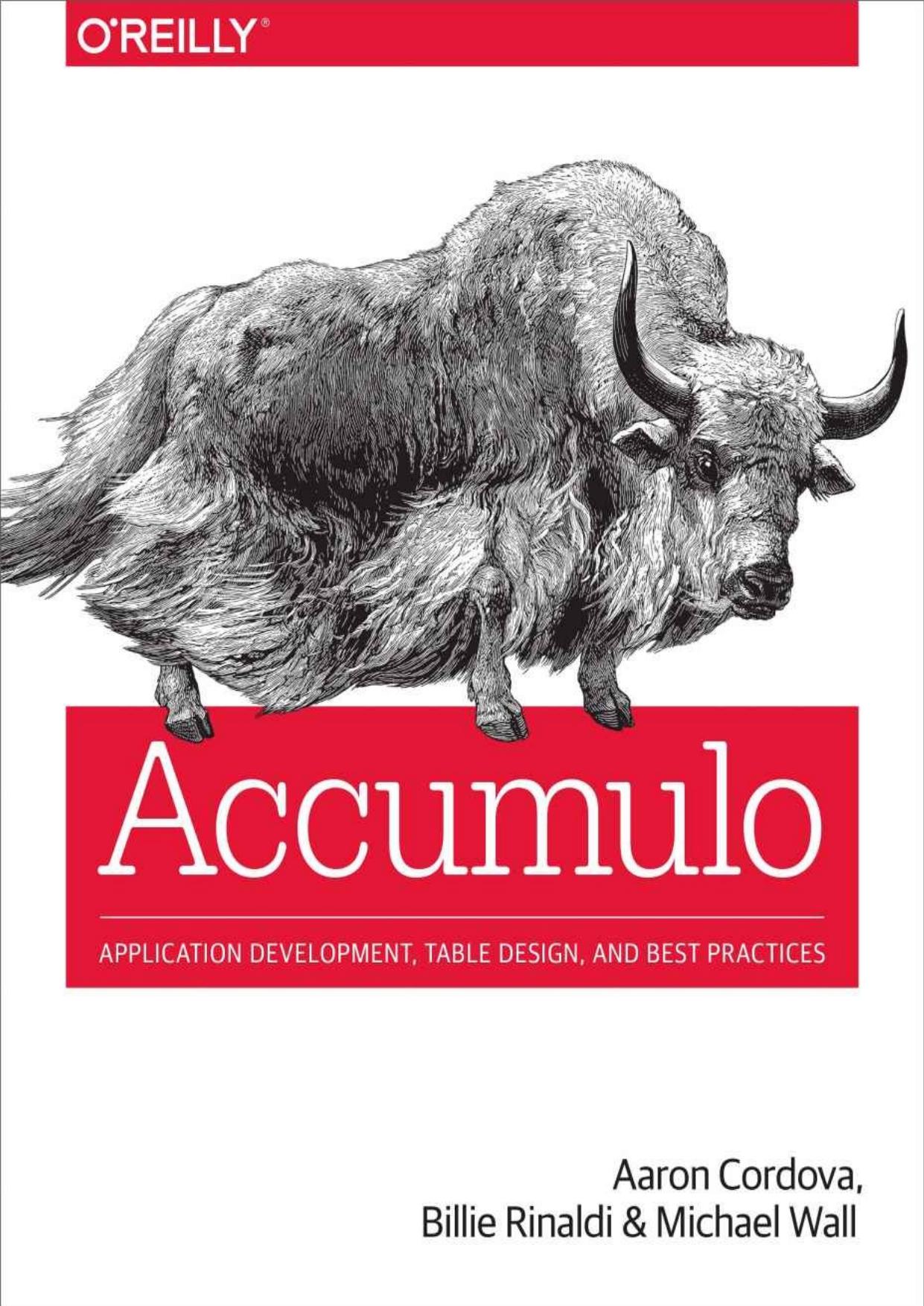Accumulo: Application Development, Table Design, and Best Practices by Aaron Cordova & Billie Rinaldi & Michael Wall

Author:Aaron Cordova & Billie Rinaldi & Michael Wall [Cordova, Aaron]
Language: eng
Format: azw3, pdf
Publisher: O'Reilly Media
Published: 2015-06-30T16:00:00+00:00
Secondary Indexing
Applications that use a single table and employ a simple access pattern are among the most scalable, consistent, and fast. This type of design can serve in a wide variety of applications. When storing records in an Accumulo table, we can store them in sorted order but can only sort them one way.
In the previous example we stored emails in order of the recipient’s email address, then by the date, and finally by a unique email ID. In this case the record ID used is a concatenation of those three elements. If we want to look up records based on other criteria, we have to scan the entire table. For these other access patterns, building a secondary index can provide a solution. These applications still need to minimize the work done at query time, to ensure high performance as the amount of data and the number of concurrent users increase.
Secondary indexes are tables that allow users to quickly identify the record IDs that contain a value from a particular field. Those record IDs can then be used to retrieve the full record from the primary table containing records. We’ll next discuss two types of secondary indexes: a term-partitioned index and a document-partitioned index.
Download
Accumulo: Application Development, Table Design, and Best Practices by Aaron Cordova & Billie Rinaldi & Michael Wall.pdf
This site does not store any files on its server. We only index and link to content provided by other sites. Please contact the content providers to delete copyright contents if any and email us, we'll remove relevant links or contents immediately.
| Cryptography | Encryption |
| Hacking | Network Security |
| Privacy & Online Safety | Security Certifications |
| Viruses |
Effective Threat Investigation for SOC Analysts by Yahia Mostafa;(7458)
Practical Memory Forensics by Svetlana Ostrovskaya & Oleg Skulkin(7179)
Machine Learning Security Principles by John Paul Mueller(7137)
Attacking and Exploiting Modern Web Applications by Simone Onofri & Donato Onofri(6809)
Operationalizing Threat Intelligence by Kyle Wilhoit & Joseph Opacki(6776)
Solidity Programming Essentials by Ritesh Modi(4565)
Microsoft 365 Security, Compliance, and Identity Administration by Peter Rising(4161)
Operationalizing Threat Intelligence by Joseph Opacki Kyle Wilhoit(3905)
Learn Computer Forensics - Second Edition by William Oettinger(3650)
Building a Next-Gen SOC with IBM QRadar: Accelerate your security operations and detect cyber threats effectively by Ashish M Kothekar(3638)
Future Crimes by Marc Goodman(3563)
Blockchain Basics by Daniel Drescher(3540)
Mastering Azure Security by Mustafa Toroman and Tom Janetscheck(3511)
Mastering Python for Networking and Security by José Manuel Ortega(3472)
Incident Response with Threat Intelligence by Roberto Martínez(3381)
The Code Book by Simon Singh(3138)
Mastering Bitcoin: Programming the Open Blockchain by Andreas M. Antonopoulos(3010)
Mobile App Reverse Engineering by Abhinav Mishra(2978)
From CIA to APT: An Introduction to Cyber Security by Edward G. Amoroso & Matthew E. Amoroso(2889)
